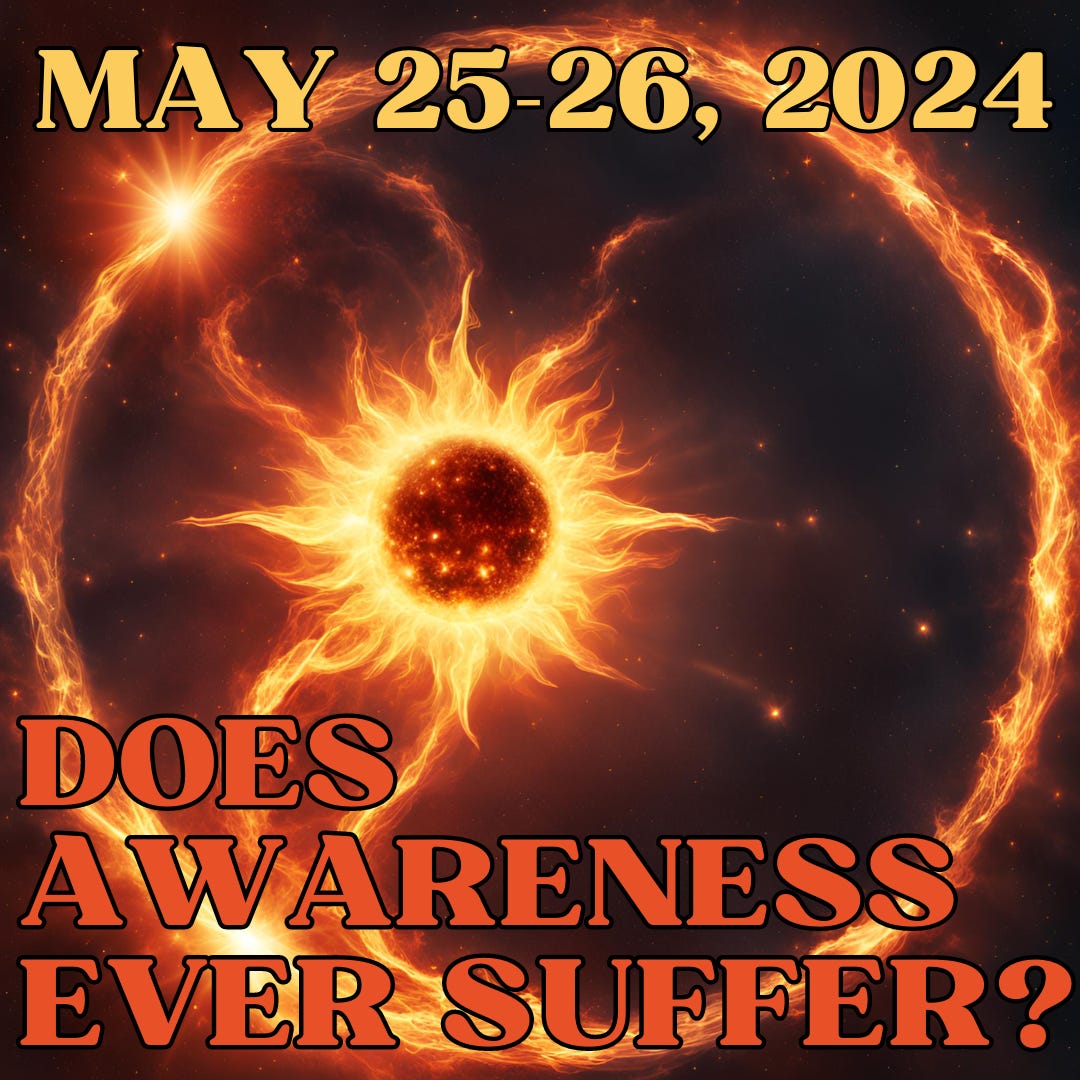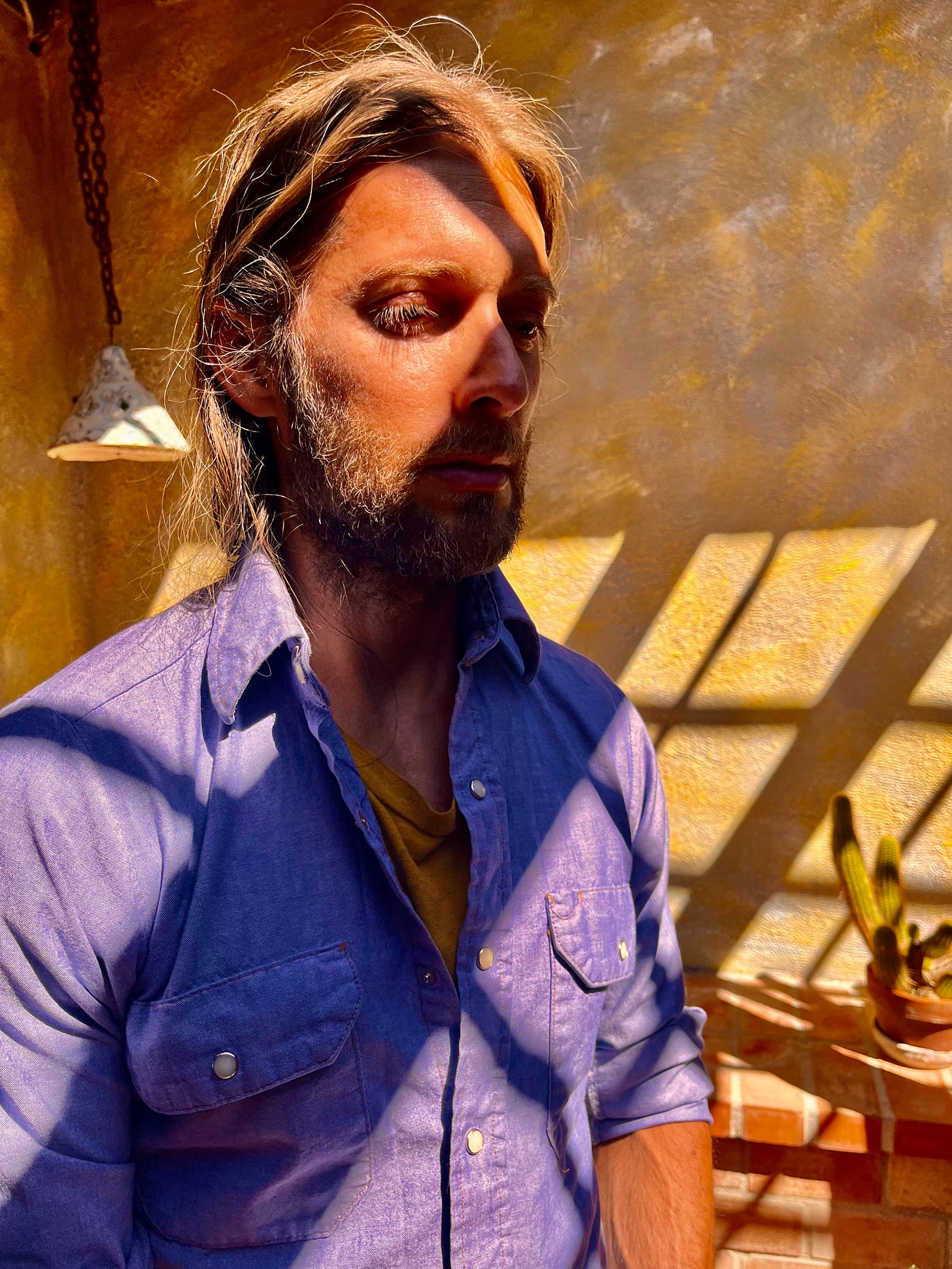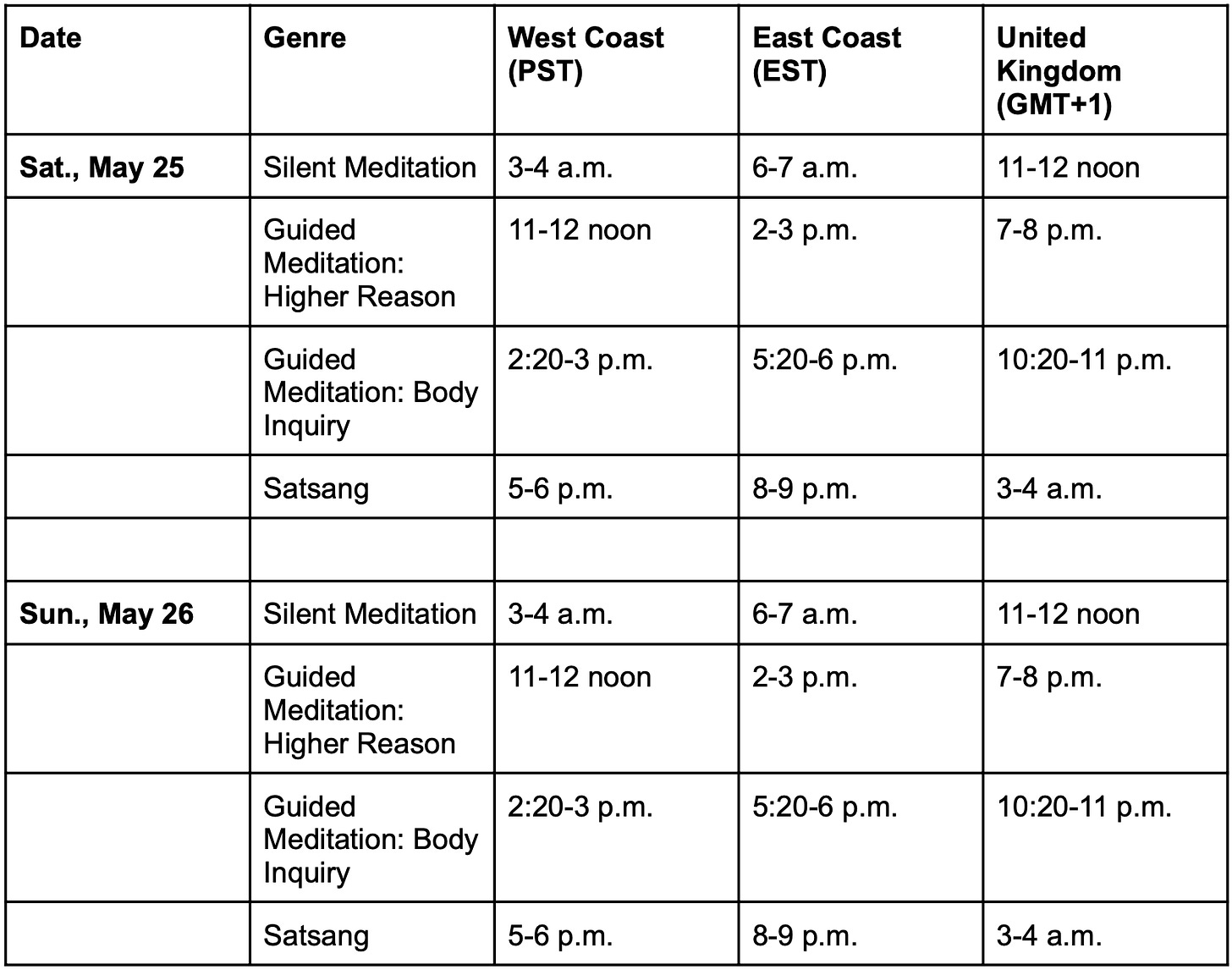
Does The Awareness That You Are Ever Suffer?
“Does The Awareness That You Are Ever Suffer?” is a 2-day home meditation retreat held on May 25 and May 26.
Drawing largely from the Direct Path teaching of Advaita Vedanta, it’s centered on a playful yet earnest exploration of one’s direct experience. Here, we are concerned in particular with whether our fundamental nature ever suffers.
The truth is that it does not.
Home Meditation Retreat At A Glance
- What: Home Meditation Retreat
- Where: Over Zoom
- When: Saturday, May 25 and Sunday, May 26 (please see schedule below)
About Me

I’m a meditation teacher and a practical philosopher. My understanding of the nondual teaching is drawn, in the main, from the Direct Path teaching of Advaita Vedanta. You can learn more about me by visiting my website.
Does Awareness Suffer?
“The ‘I am the body idea’ is the seed of all sorrow.”
—Adi Shankara, Vivekachudamani
This body grows old, may become ill, and shall die. The senses fade. The mind’s clarity fades and, in time, all knowledge of the world is drawn to a close. Suffering, in short, seems to abound.
But am I this body, these senses, or this mind? This—to paraphrase Hamlet—really is the question.
During this 2-day online retreat, we’ll be exploring the proposal that what we essentially are is awareness, or aware being. And we’ll look very closely and carefully at this stunning implication: if we are awareness, then our very nature is beyond suffering. In fact, our very nature is abiding—and so non-contingent, non-circumstantial—peace.
We’ll undertake this exploration through (a) rigorous inquiries into the nature of the mind and world and through (b) more poetic, somatic inquiries into the nature of the body.
Details
On Saturday, May 25 and Sunday, May 26, we’ll come to the heart of the perennial nondual teaching.
Each day, you’ll have the opportunity
- To sit for a 60-minute silent meditation (*),
- To take part in a 60-minute guided meditation following the line of higher reason, (**).
- To take part in a second 40-minute guided meditation focused on the body identity (***),
- And to attend a 60-minute satsang (that is, a question and answer session devoted to clarifying the nondual teaching) (****).
Your level of participation will be up to you. You can come to all sessions, to most sessions, or to only some sessions.
Brief Notes On These 4 Genres
(*) Silent Meditation Period (30 min. or 1 hr.): The sitting period will begin with 3 strikes of the singing bowl. At the 30-min. mark, a bell will sound once; this will indicate that you can (a) get up and leave, (b) get up, stretch your legs, and then return for the second half of the sit, or (c) “sit through”: that is, continue sitting without moving until the end of the 60 minutes.
(**) Guided Meditation: Higher Reason (1 hr.): Simply sit in openness and follow the inquiry we’ll be undertaking together. In this case (that of higher reason), we’ll examine the nature of our direct experience in order to deconstruct old views that aren’t in accord with what we’re discovering and in order to reveal, very freshly, what is actually the case.
(***) Guided Meditation: Body Inquiry (40 min.): Simply sit in openness and follow the inquiry we’ll be undertaking together. Because the “I am the body” identity makes one feel separate and contained, we’ll look very closely to see what the body truly is.
(****) Satsang Period (1 hr.): This is an opportunity for you to have your questions answered, your real doubts resolved. Bring with you any questions or doubts pertaining to (a) your understanding of the teaching, (b) anything that has come up during seated or guided practice (e.g., physical pain, certain recurring thoughts, etc.), and (c) ultimate concerns about life that may have sprung forth from your life situation (e.g., not knowing what you’re doing with your life, etc.).
Schedule

Dana
Dana, loosely translated as “donation” or “generosity,” is given with a view to helping support others—here, my family and me.
The following provides some guidance on how much may be appropriate for you to give:
- Suggested Dana: $80 USD
- Limited Means Dana: $40 USD
- Patron Dana: $120 USD
- Scholarship: $0 USD
- If you’re very eager to participate yet if you’re not able to offer dana, then you can sign up via Luma (see “How To Register” below) and also send a note separately via this Contact Form.
Your donation, which will secure your spot in the retreat, can be offered through either of the following 2 platforms:
1.) Venmo
2.) PayPal
How To Register In 2 Steps
FIRST: Sign up for the 2-day retreat via Luma One-Click Register.
SECOND: Offer dana via Venmo or PayPal.
Once you’ve registered and offered dana, you’ll receive a message that will confirm your participation; this email will also include the appropriate Zoom links. Since this is not an automated process, you can expect to receive Zoom joining information from my wife Alexandra within 24 hours.
You must be logged in to post a comment.